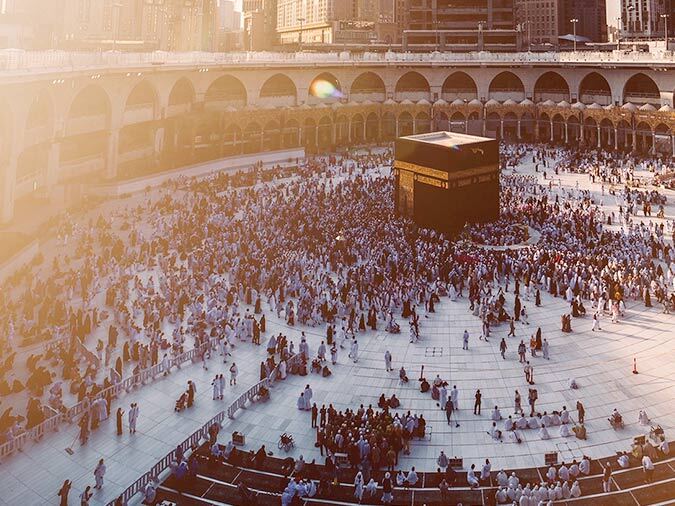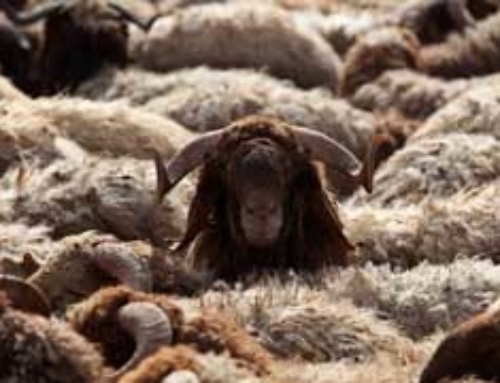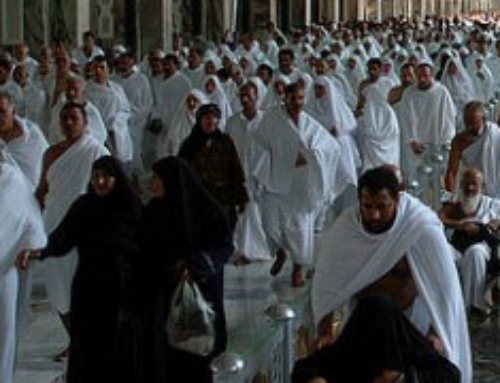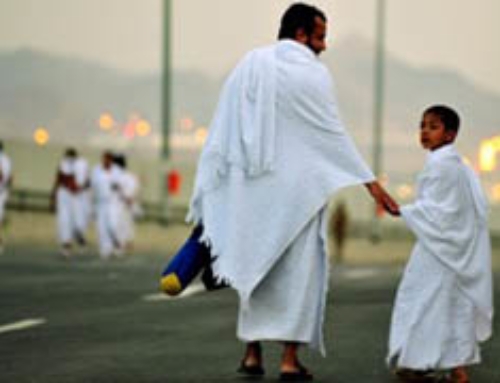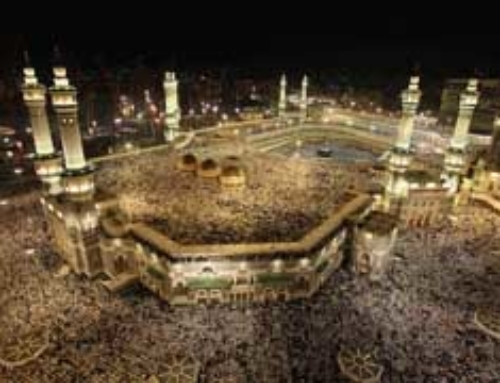The Kaaba: A Symbol of Faith and Unity
The Kaba, sometimes spelled Kaaba, is a holy cube-shaped building located in the city of Mecca in modern-day Saudi Arabia. The Kaba is in the center of a mosque in Mecca called the sacred mosque (Al-Masjid al-Haram). Muslims also refer to it as the house of God. It is considered the holiest site in Islam and Muslims throughout the world face the Kaba when they perform their prayers. To the unfamiliar, one might mistakenly assume that Muslims worship the Kaba, but this is untrue. They pray toward the Kaba, not to it. The Kaba is the direction of their prayer, not the object of it. This misconception stems from the fact that Muslims are seen bowing and prostrating in front of the Kaba in pictures. In this article, we will explain what the Kaba is and its significance in Islam.
A Brief History and Description
The Kaba is believed to have been built by Adam when he descended on earth from heaven. After the flood of Noah, the Kaba was destroyed and the only thing that remained was its foundations. It was then Prophet Abraham and his son Ishmail who raised the foundations of the Kaba and rebuilt it. The Kaba is about 50 feet in length, 33 feet wide, and 45 feet tall. The four corners of the Kaba correspond with the four points of the compass. There is nothing hidden inside the building, rather it is just empty besides a few lamps. The Kaba is made of brick and it is covered with a black cloth that has Quran written on it and is changed from year to year.
The Prophet Muhammad’s Restoration of the Kaaba
In the time of the Prophet Muhammad, peace be upon him, the Kaba was occupied by a tribe called Quraysh who were idol worshippers. There were about 360 idols and false gods in the Kaba. After most of Arabia accepted Islam, the Prophet Muhammad peace be upon him remove the idols and restored the Kaba to its essence. He restored it as a place where only one God is worshipped. In the time of Prophet Abraham, peace be upon him, the Kaba was barren and there was no one around. God then commanded Prophet Abraham, peace be upon him, to call people to perform the pilgrimage. Prophet Abraham, peace be upon him asked God why he should perform a call if there is no one there to answer. God responded by saying that the call is on you and the delivering of the message on Me. Since then, millions of Muslims visit the Kaba every year to perform the pilgrimage known as Hajj. They perform rituals such as walking around the Kaba in a counterclockwise fashion. This pilgrimage takes place at a particular time of the year during the Islamic month of Dhul Hijjah. This pilgrimage is the main pilgrimage that able Muslims need to perform once in their life, it is sometimes referred to as the major pilgrimage. Muslims can perform a minor pilgrimage that can take place anytime during the year.
The Kaaba’s Significance to Muslims
The Kaba has a black stone in its eastern corner which is also considered holy. It is believed that Adam and Eve received a stone when they were expelled from the heavens. Muslims believe that Abraham and his son Ishmael restored the stone and placed it back into the Kaba. The Blackstone is a symbol of God’s covenant on earth. When Muslims walk around the Kaba many try to touch the Blackstone for blessings and to renew their covenant with God. The stone was originally white but turned black due to the sins of the many pilgrims who visited it.
In addition to pilgrimage, all Muslims face the Kaba when they perform their five daily prayers. Although voluntary, many also face it when reciting the Quran. The purpose of facing the Kaba is to provide a sense of direction and unity among all Muslims. Ultimately, all Muslims are one family, facing one direction, worshiping one God. Additionally, when Muslims bury their dead, they make sure that the body lying on its right side and facing the Kaaba. In both death and life, this building holds great significance for Muslims.
Prayers at the Kaaba
Because the Kaba is considered the holiest site in the House of God, rewards for praying there are multiplied. Performing one prayer in the Kaaba is equal to praying 100,000 prayers. Similarly, the holiness of the Kaaba means that sins should not be committed in its vicinity. It is prohibited to cut any trees, scare animals, or hunt around the Kaba.
In summary, the Kaba is the holiest site in Islam. Muslims throughout the world are connected to it daily in their prayers and yearn to visit it to perform the pilgrimage. They do not worship the Kaba, but rather they pray to God and God alone. Have more questions? Call 877-WhyIslam, you deserve to know!
Got Questions?
We have Answers. Get in touch now.


